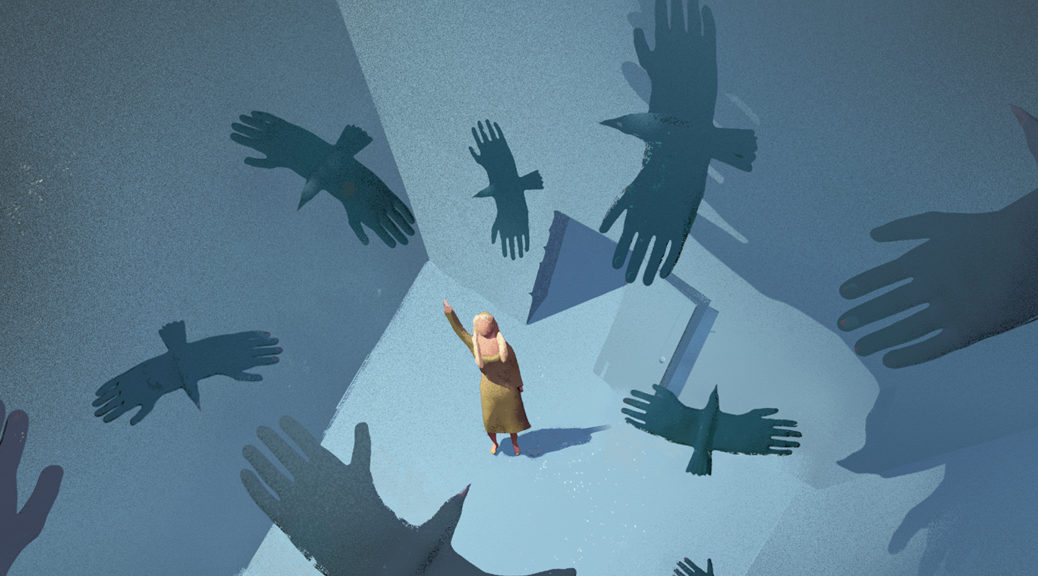
PASSION-WROUGHT ‘JENUFA;’ A HOT-AND-COLD ADULT FAIRY-TALE OPERA
SANTA FE, NM—-With new leadership at the helm, the Opera here is making news this summer with two shows for very different reasons: One, an emotion-torn, gut-wrenching “Jenufa” that was the summer’s runaway hit drama, the other a world-premiere fairy-tale for big people.
The human tragedy “Jenufa” is built around the village saga of two dramatic sopranos playing the title role and the stepmother respectively: Jenufa, jilted by the playboy Steva and faced with disgrace for her birth out of wedlock, and the guilt-torn stepmother Kostelnicka who disposes of the baby in hopes of redeeming Jenufa’s repute. The stage may still be smoking from the high emotions engendered by Patricia Racette as the stepmother, railing against the cad/lover, praying, sympathizing with the daughter, and finally taking the murderous step to save the daughter.
The Racette tour de force will be etched in memory for years, even though the role she played was heroic only in her mind as she made a dire choice: to save Jenufa’s reputation in the old town rather than save the baby. The choice resonates today, even though stemming from a distant back-country environment more than a century ago, drawn by Janacek from a Moravian stage play.
David Alden’s stage direction was notable, handling unruly crowd scenes and spotlighting absurdities. He has Jenufa’s backup suitor Laca transform from a true loser into a mature and plausible swain. And when in the finale some folk dancers breeze in to see Jenufa, the urbane, overdressed Mayor’s Wife raises and waves an arm with a lilt, as if to show she’s reallywith it.
Of note in a memorable cast were Laura Wilde (Jenufa), and the two tenors, Richard Trey Smagur (Steva), a nonstop giant of a man, and Alexander Lewis (Laca). Johannes Debus conducted that rocky score with dispatch.
This is what the opera experience is about: Riveting, wrenching, totally immersing the patrons into the drama, in a multi-dimensional way unique in all the performing arts. May it ever wave!
On another wavelength, the latest world-premiere opera is a strange two-headed beast, this time around: A thoroughly sleepy opening act, then a wild fairy tale for the closer. “The Thirteenth Child” by the Dane Poul Ruders, 70, is a medieval curiosity, basking in costumes straight out of King Arthur’s court.
If the first half of “The Thirteenth Child” is deader than a doornail, the second makes up for it, with robust choruses, arias and duets. Plus magic, ghosts and people turning into flowers, then ravens, then humans who may or may not retain their souls long term. Following all that? All because of the villain Drokan’s deceit and slander, and a stupid king’s gullibility.
For this opening season of the Santa Fe Opera’s fourth general director Richard Meya, a hit premiere rather than a hot-and-cold opus would have been preferable. The special effects were state-of-the-art, especially Aaron Rhyne’s quicksilver projections for the supernatural effects (How else to depict a dozen ravens zooming about the rafters?), enough to make you giddy or fearful.
It’s all based on the Grimm Brothers’ “The Twelve Brothers,” a fairy tale with multiple death scenes more suitable for adult audiences. Lyra the heroine is charged by her dying queen-mother Gertrude to find her 12 missing rebellious brothers in the enchanted forest. The quest successful, the siblings all make peace with one another. When she cuts the dozen royal lilies to prepare a joint feast, that casts a spell turning all her brothers into ravens.
That leaves a colossal challenge: The ghostly Gertrude materializes, telling Lyra that the spell can only be broken if she remains silent for seven years. For this activist soprano who has trouble remaining silent for seven minutes, that’s a supreme challenge, but somehow she meets it.
Ruders’ orchestra, under Paul Daniel, was restless, forceful and even aggressive, with a notable storm of fury to begin act two.
The merit of the SFO apprentice (singing) program was clear when the lovers who unite the rival kingdoms at the end, the exemplary (Frederic) and Lyra, were both products of the SFO program. The spinto soprano Jessica (E.) Jones carried off the opera’s key part handsomely, and tenor Joshua Dennis was no less memorable in a smaller role.
I loved the ground-rumbling alto voice of Tamara Mumford playing Lyra’s authoritative queen mother Gertrude. As for bass-baritone Bradley Garvin, his evil Drokan elicited admiring boos at the final-curtain bows, which he egged on grandly.
Stage Director Darko Tresnjak swept people on and off the stage neatly, in droves, even the dozen brothers coming in many sizes.
The Santa Fe Opera offers a unique outdoor-indoor house, open to the sides for views of the hills that Georgia O’Keefe’s paintings made famous, all at 7,000 foot altitude—yet another challenge for singers, yet another attraction for visitors reveling in the cool high desert. Despite the occasional summer thunderstorms, Aug. 9 was the first time in history a performance was interrupted (20 minutes) by weather here.
SOLAR OVATION—This may be the only opera house in America where the sun can get a round of applause. It happened in “Jenufa,” act one, when the rear of the stage was opened up, showing a glorious sunset.
“The Thirteenth Child,” a world premiere by Poul Ruders, by Santa Fe Opera, through Aug. 21. 105 minutes long. Also “Jenufa” by Janacek, in Czech, 2:45 in length. Both with one intermission. For SFO info: (505) 986-5900, or go online.